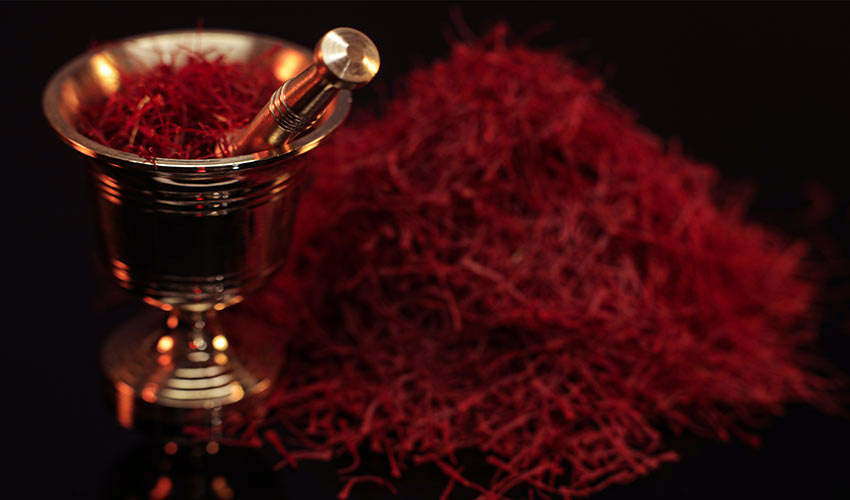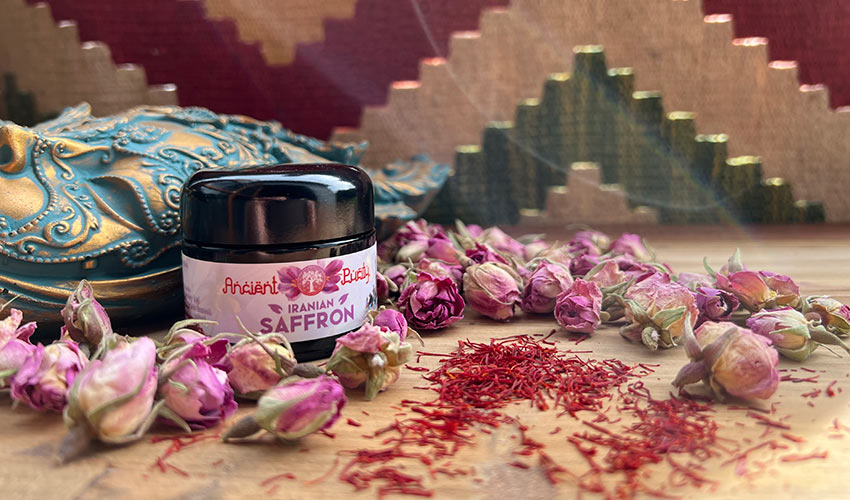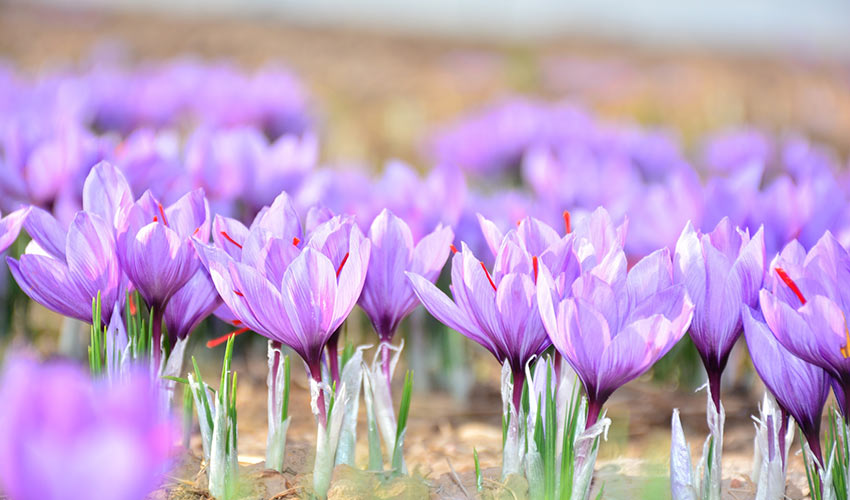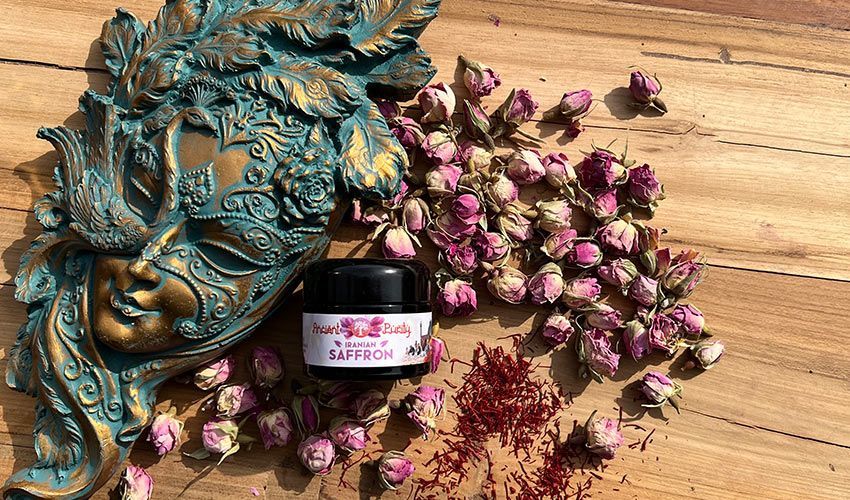Saffron and ADHD
Saffron is a spice derived from the flower of the saffron crocus (Crocus sativus). It is known for its distinctive flavour, aroma, and golden-yellow colour. Saffron is widely used in cooking as a seasoning and colouring agent, particularly in Mediterranean, Middle Eastern, and Indian cuisines. It is also used in traditional medicine for its various health benefits. Saffron is one of the most expensive spices in the world because it requires a significant amount of labour to harvest as each flower produces only three stigmas which must be hand-picked and dried.
There are numerous benefits of saffron that range from improving overall health to treating specific health conditions. In this article, we will take a closer look at some of the key benefits of saffron. From Reducing Symptoms of Depression and Anxiety, Boosting Immune System Function, Improving Brain Function and Memory, Promoting Healthy Digestion, Reducing Inflammation Throughout the Body, Supporting Heart Health and Reducing High Blood Pressure. Saffron is a true superfood that many of us could benefit from incorporating into our diets. It's a delicious, easy to use and effective natural remedy. Its unique flavour and aroma make it a popular choice for chefs and home cooks alike. But today we are talking specifically on it's use and ADHD.

Saffron and ADHD
ADHD or Attention deficit hyperactivity disorder is a neurodevelopmental disorder that affects children and adults. It is characterised by the inability to pay attention, excessive restlessness, and impulsivity. While medications like Ritalin, Adderall, and Strattera are commonly used to treat ADHD, some people prefer taking natural remedies like herbs and supplements. One such potential remedy is Saffron, a spice derived from the Crocus sativus plant. Saffron has been used for centuries in traditional medicine to treat various ailments like depression, anxiety, and inflammation. Recent studies have shown that Saffron may also have beneficial effects for people with ADHD. One study published in the Journal of Child Neurology examined the effects of Saffron extract on 54 children with ADHD between the ages of 6 and 17. The study found that after 8 weeks of treatment, the children who received Saffron extract showed significant improvement in their ADHD symptoms, including increased attention span, reduced hyperactivity, and improved social behaviour.
I’ve read another study published in the Journal of Psychiatric Research that investigated the effects of Saffron on 60 adults with ADHD. The study found that after 6 weeks of treatment with Saffron extract, the adults showed significant improvements in their ADHD symptoms, including reduced impulsivity, improved attention, and better executive functioning. While these studies provide promising evidence for the use of Saffron as a natural remedy for ADHD, further research is needed. It is also important to note that Saffron is a potent spice and should be used with caution. It is essential to consult with a healthcare professional before starting any new treatment, natural or otherwise. In a nutshell, Saffron may provide a natural remedy for ADHD symptoms. More research is needed to fully understand its effectiveness. However, it is essential to ensure safe and appropriate use and to consult with a healthcare professional before using any natural remedy. There aren’t many European companies that supply premium Saffron directly from the farm. Ancient Purity supplies the highest quality of Saffron and not solely for its ADHD benefits.

Saffron on Brain & Memory Health
Saffron is an excellent source of several bioactive compounds, including carotenoids, safranal and crocin, which are all known for their potent anti-inflammatory and antioxidative properties. Research indicates that these antioxidant and DNA-protective properties have a significant effect on the wellbeing of brain function and promote neuroplasticity. Brain function grows neurons even into old age, allowing neural communication and establishing strong synapses – which knowledge is being held in networks of synapses – allowing for easier recall in some sense. This process is critical when it comes to addressing mood disorders, cognitive dysfunction and event trauma. These processes may change the neurochannels and develop neuroprotection, decrease neuron mitochondria damage and prompt communication modal switches inside the hippocampal formation.
In a study conducted by Akhondzadeh and colleagues (2010), 46 adults from from Iranian with Alzheimer’s disease were cosigned to receive a standardised saffron extract over a period of 22 weeks to determine the effect on subjective memory, cognitive performance, global efficacy, mood disorders and performance and health-related quality of life. This double-blind randomised clinical trial drew upon applications of neuroimaging i.e. fMRI scans to measure effect the extracts had on mood state and functionality. The study found a meaningful increase in memory retention as well as cognitive and activity improvements. Another research conducted focused on the activation of various synaptic changes that lead to optimal signal transduction affecting distinct behavioural advantages. These found results speculate that dietary rich in neocarmitin and crocin represent a potential treatment option for certain neurological functions as optimal synaptic functionality is linked to improved episodic memory ability, increased neuroplasticity levels and lowered late onset of depression.
This direction allowed a recent University of Indiana brain researchers’ medial temporal lobe experts drew 72 test subjects for a double blind placebo-controlled trial. Their genetic nature varied at and older than 60 years but received a saffron uptake supplement including evaluations done on five single pivotal memory-enduring events' details that spread between two before mg/day). After sixteen weeks’ body insight scans showed significant lateralized hippocampal remapping as a solid indicator that test groups representations were developed asymmetry–in turn increasing recall requirements. The results suggest such cognitive symptom strategies as brilliant macular increases involved in age preservation and discerning spatial orientation accuracy. Overall, there is plenty of research to suggest that carefully prescribed saffron extracts provide neuroprotection thereby stymieing inflammation and decay, promote epigenetic changes that lead to functional advantage mechanisms. Daily saffron intake is typically thought safe based on extensive testing; furthermore alongside early or late memory guided issues accessible to free synthesis ways which posit that saffron could improve many of age-related cognitive issues by empowering synaptic integration functions and protecting neurons from numerous age-linked illnesses while giving attention to brain health prosperity. So based on evidence provided, perhaps in future, we would to see an increase in utilisation in food dessert recipes further potentially offering new horizons of health possibilities – stay optimistic, keep savouring positivity and live optimum self-health!

There's other Benefits to Saffron too
Ok so some incredible information there, wether you feel there is enough evidence or are optimistic more will come down the line, for now with no side effects, there's no reason to not start using Saffron in your diet. Let's mention a few other reasons why it could be a powerful herb in your daily life. Then in food, as Saffron is a unique and expensive spice that is often used in Middle Eastern and Mediterranean cuisine. It has a distinct flavour and aroma that is both sweet and slightly bitter, with a floral and earthy undertone. We will share some of the most common culinary uses for Saffron.
Anti-Inflammatory Properties: The crocin in Saffron has anti-inflammatory properties and can help reduce inflammation in the body.
Reduced PMS Symptoms: Saffron can help reduce symptoms of PMS, including cramps and mood swings.
Lowered Cholesterol: Saffron can help lower cholesterol levels in the blood.
Improved Vision: Saffron can improve vision and protect against age-related macular degeneration.
Improved Heart Health: Saffron can improve heart health by lowering blood pressure and reducing the risk of heart disease.
Improved Digestion: Saffron can improve digestion and reduce symptoms of digestive disorders.
Antimicrobial Properties: Saffron has antimicrobial properties and can help fight off infections in the body.
Flavouring Rice Dishes: One of the most popular uses for Saffron is to add it to rice dishes such as biryani, risotto, paella, and pilaf. It adds a vibrant yellow colour and a beautiful aroma to the dish, making it more visually and aromatically pleasing.
Flavouring Soups and Stews: Saffron is often used to flavour soups and stews. It adds a depth of flavour and a rich colour to the dish, making it more flavourful and visually appealing.
Making Saffron Tea: Saffron tea is a popular drink in many Middle Eastern and Mediterranean countries. It is made by adding a few strands of Saffron to hot water and letting it steep for a few minutes. It has a unique, slightly sweet flavour, and is often used as a natural remedy for various ailments.
Flavoured Desserts: Saffron is often used to flavour desserts such as ice cream, custards, and cakes. Its sweet and floral flavour adds a unique twist to traditional desserts, making them more exotic and luxurious.
Seasoning Meat Dishes: Saffron is a great seasoning for meat dishes such as chicken, lamb, and beef. It adds a unique flavor that complements the meat, making it more flavorful and enjoyable.

Iranian Saffron
Ancient Purity supplies Saffron from the Iranian Khorosan Province as we believe that’s where the best Saffron grows. Although Khorasan Province is known as the main saffron-growing region in Iran, other areas like Fars, Kerman, Lorestan, and East Azerbaijan are now also producing this precious spice. It takes roughly 150 flowers to yield 5 grams of saffron stigmas, which results in 1 gram of dried Saffron spice. Due to the labor-intensive nature of harvesting Saffron, it is considered a very valuable and expensive spice, earning it the nickname "Red Gold". While saffron thrives in hot, dry climates, the quality of the soil is crucial. Heavy clay soil must be avoided, and well-drained, neutral clay-calcareous or silty soil is ideal. The Saffron harvest season begins in early November when the vibrant purple flowers blanket the fields, creating stunning landscapes in Iran's arid regions.
Iranians use Saffron extensively in their cuisine. A thin layer of Saffron-infused mixed rice is a staple in Iranian hospitality, and the spice is used for flavouring dishes like ice cream and rice pudding. Some also enjoy Saffron-infused herbal tea as a refreshing beverage. For optimal shelf life, Saffron should be stored in an airtight container in a cool, dark, and dry place. Avoid freezing, as this can reduce its aroma. To infuse Saffron in cooking, Persians typically grind the stigmas in a mortar, mix them with hot water, and allow the mixture to sit in a warm place. From there, the diluted liquid can be added to various dishes or used to garnish plates. If you're interested in purchasing high-quality Saffron from Iranian farmers directly, consider checking out Ancient Purity Saffron. We supply top- quality Saffron Oil as well. More on that another time.















